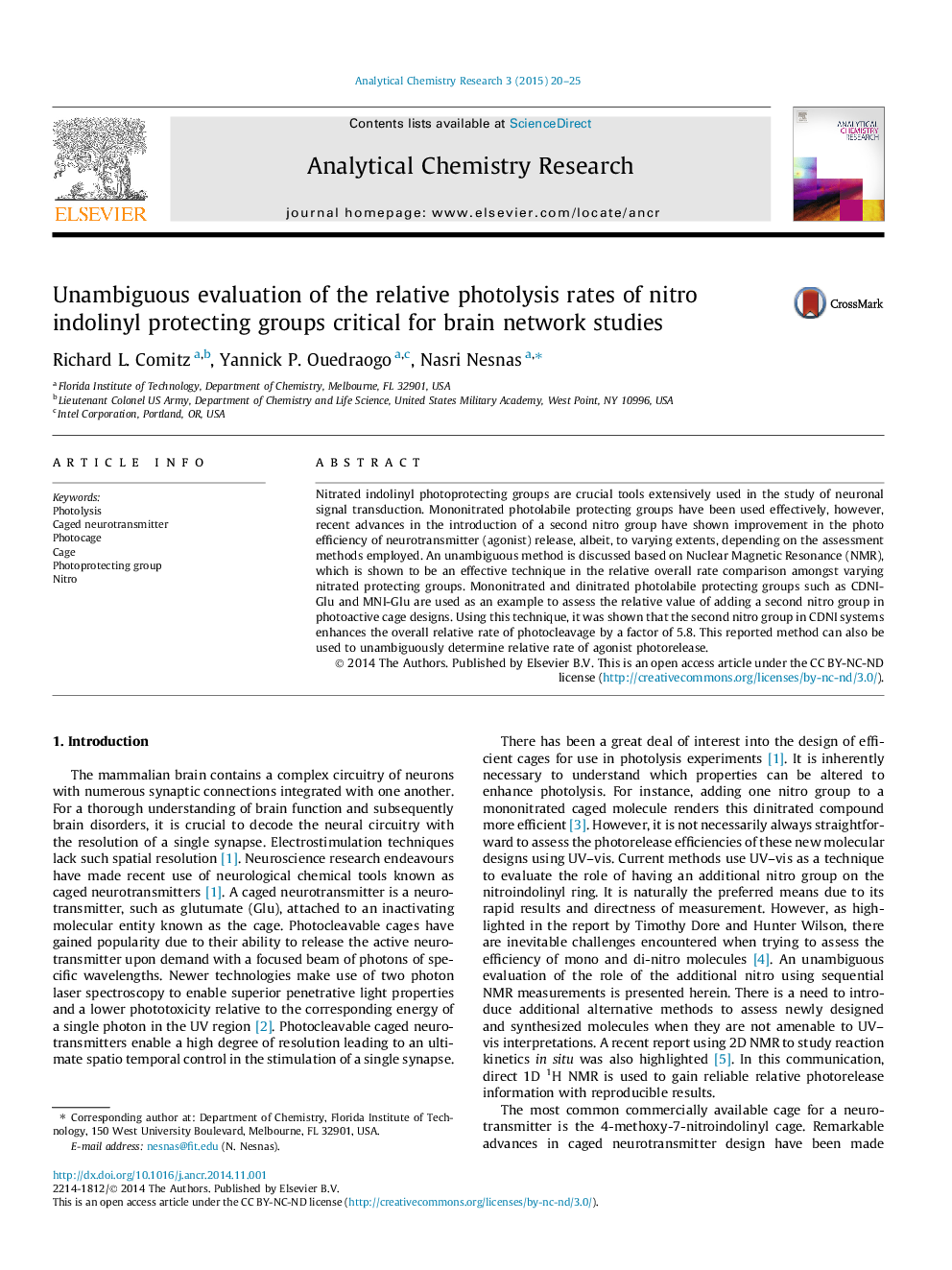| Article ID | Journal | Published Year | Pages | File Type |
|---|---|---|---|---|
| 1177960 | Analytical Chemistry Research | 2015 | 6 Pages |
•We present an unambiguous method to evaluate the efficiency of Photoprotective groups.•Traditional UV–vis methods are only truly effective with mononitrated indolinyl systems.•Using NMR integration of specific protons enabled a clear assessment of photolytic efficiency.•Introduction of a second nitro group in indolinyl system does improve efficiency of release by at least 5.8 folds.
Nitrated indolinyl photoprotecting groups are crucial tools extensively used in the study of neuronal signal transduction. Mononitrated photolabile protecting groups have been used effectively, however, recent advances in the introduction of a second nitro group have shown improvement in the photo efficiency of neurotransmitter (agonist) release, albeit, to varying extents, depending on the assessment methods employed. An unambiguous method is discussed based on Nuclear Magnetic Resonance (NMR), which is shown to be an effective technique in the relative overall rate comparison amongst varying nitrated protecting groups. Mononitrated and dinitrated photolabile protecting groups such as CDNI-Glu and MNI-Glu are used as an example to assess the relative value of adding a second nitro group in photoactive cage designs. Using this technique, it was shown that the second nitro group in CDNI systems enhances the overall relative rate of photocleavage by a factor of 5.8. This reported method can also be used to unambiguously determine relative rate of agonist photorelease.
Graphical abstractFigure optionsDownload full-size imageDownload as PowerPoint slide
